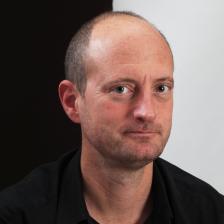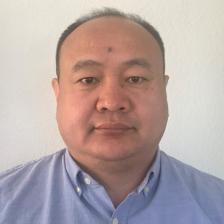
How to Fight Corruption in Mining: Piloting the Corruption Diagnostic Tool in Mongolia
Corruption in the extractive sector is one of the biggest obstacles to accountable and sustainable management of natural resources. Yet the complexity and opacity of the sector can make it difficult for reformers to work together to effectively tackle corruption. To address this challenge, NRGI created an adaptable six-step process to help anticorruption actors identify and understand the most pressing problems in their country’s extractive sector and develop an action plan to address them. (Read more about how we developed the tool.) Since then, we piloted the use of the tool in Mongolia.
To ensure broad participation of actors in the tool’s design, NRGI has identified EITI multi-stakeholder groups (MSGs) as ideal initial users. This approach is particularly pertinent given EITI’s renewed focus on tackling corruption from 2019. Working in partnership with the EITI International Secretariat, NRGI has issued a call for expressions of interest from EITI implementing countries, and EITI-Mongolia volunteered to pilot the tool in early 2021. The sector has been beset by scandal in the past decade, while many EITI recommendations required further action. Given this lack of progress, EITI stakeholders hoped that the corruption diagnostic tool could reinvigorate efforts to hold corrupt actors to account.
Piloting the tool in Mongolia
With the financial support of GIZ, NRGI’s Mongolia team worked alongside the EITI-Mongolia Secretariat to initiate the corruption diagnosis process throughout 2021.
Understanding the problem. To initiate the diagnostic, the EITI Mongolia MSG set up a working group, including representatives from civil society, industry bodies and government agencies to lead the process. Tasked with analyzing the economically important but scandal ridden mining sector, two independent experts conducted an in-depth sectoral review and identified seven key areas of concern (steps 1 and 2). Given the potential for change, the significance of the problems in this area and the lack of attention paid to this issue, the sub-working group opted to focus its attention on mining operations (step 3).
Developing an action plan. The next step was to prioritize key areas for action. This involved reviewing the underlying causes of corruption in mining operations and assessing the potential for impactful reforms (step 4). This led the sub-working group to focus on monitoring and accountability systems for public servants, competition concerns, and the roles of officials and local government authorities. To create a pathway for implementation, the sub-working group developed corresponding action plans for EITI and Mongolia’s anticorruption agency. These included various measures to improve both transparency and accountability, such as digitizating licensing procedures and conducting training and awareness raising activities (steps 5 and 6).
At the end of 2021, the diagnostic action was approved by the Mongolia-EITI MSG and incorporated into the 2022 Mongolia-EITI annual work plan. (Read the full summary of the diagnostic process and conclusions.)
Lessons from the pilot
In addition to the importance of close collaboration between the NRGI Mongolia team and the Mongolia-EITI Secretariat, particularly through the sub-working group, the pilot revealed several key lessons that can help anticorruption actors make the best use of the tool:
- Understand the key players. Participants stressed the importance of power mapping stakeholders and understanding what influences them at an early stage of the process. This should influence decisions on who is involved in the process and thinking through the range of actors to target with responsibility for actions. This process can also help build alliances between different anticorruption actors. One of the most positive outcomes of the process was EITI-Mongolia stakeholders building a stronger relationship with the country’s anticorruption agency.
- Use international pressure strategically. Linked to the previous point, collaborating with an international organization can have its benefits. Key stakeholders in government may find international organizations less threatening than domestic civil society, and may also be interested in learning from anticorruption experiences from other countries and how international actors can help improve their country’s global standing.
- Invest time in interviews. Smaller working groups, sectoral or ministry focus groups or one-on-one interviews may be more time-consuming than broad workshops, but they ultimately provide more useful information, particularly when the contributions are anonymized. People are more comfortable sharing their insight in such setting. Given the clandestine nature of the topic, interviewees will also likely only have a partial view or experience of the scale of corruption. Therefore, it is important to reach out to a broad range of actors to compile a fuller picture of the issue, including the victims of corruption.
- Look out for guarded areas. Researchers may come across areas of the law, procedures or processes that officials or businesses more closely guard. While this does not necessarily mean that anything untoward happening, increased opacity and secrecy could indicate that these are areas of concern and may warrant further attention from journalists or civil society.
Next steps for the corruption diagnostic tool
To ensure that the tool remains a useful and adaptable resource, we recognize the need for ongoing review and refinement of its guidance and processes. As part of this process, we intend to support use of the tool in more jurisdictions to to gather further insights and identify any challenges that may arise. At present, anticorruption actors in Colombia, the Philippines, and Guinea have either completed or are in the process of using the diagnostic tool to assess their respective extractive sectors. We also plan to provide new research guides to further enhance the tool’s utility and are exploring ways to make the tool more accessible.
Photo by Paula Bronstein for Getty Images
Authors

Susannah Fitzgerald
Governance Officer

Matthieu Salomon
Acting Governance Programs Director | Lead, Anticorruption

Dorjdari Namkhaijantsan
Mongolia Manager
Zoljargal Naranbaatar
Mongolia Officer
